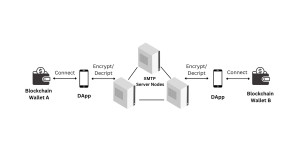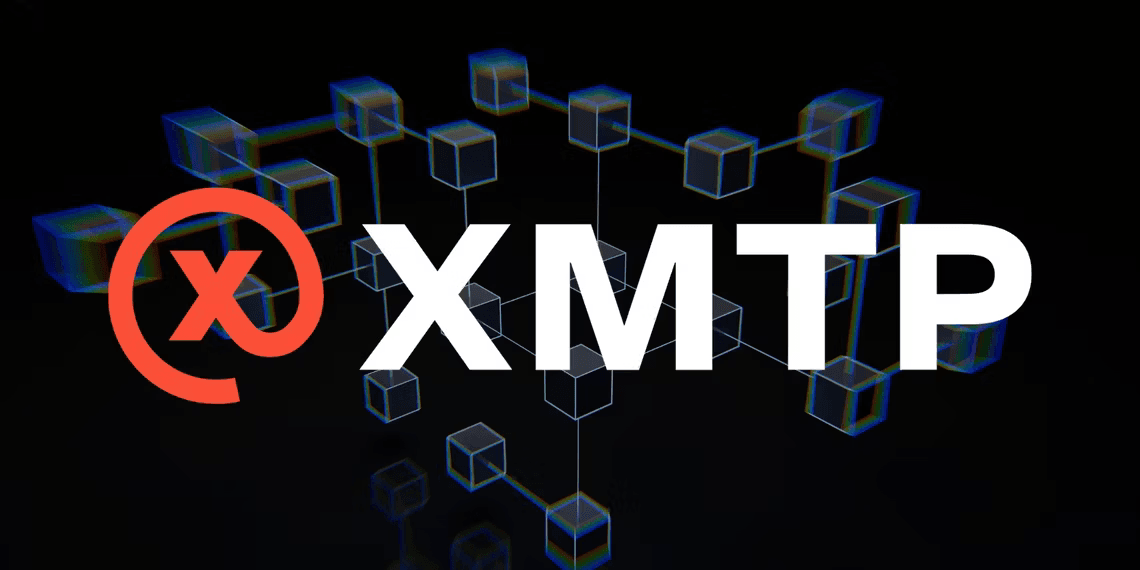Introduction: XMTP Web3 Protocol Explained
In a rapidly evolving digital landscape, the transition from Web2 to Web3 has brought forth a wave of groundbreaking technologies and protocols. Among these, the Extensible Message Transport Protocol (XMTP) emerges as a game-changer in the realm of decentralized messaging. This article delves deep into what XMTP is, how it functions, and its potential to redefine the way we communicate in the Web3 era.
Introducing XMTP: Messaging for the Future
As the world embraces the principles of decentralization, user ownership, and interoperability, traditional messaging protocols designed for Web2 fall short of meeting the demands of the Web3 ecosystem. XMTP, short for Extensible Message Transport Protocol, steps in to bridge this gap. But what exactly is XMTP, and why is it generating so much buzz?
What Is XMTP?
XMTP, the Extensible Message Transport Protocol, serves as a robust framework for secure and private messaging between blockchain accounts. Beyond mere messaging, it underlines a commitment to decentralization, blockchain support, and empowering users with data ownership. XMTP is gaining momentum with support from tech giants and is already making its mark in various decentralized applications (DApps).
Deciphering XMTP’s Inner Workings
To truly grasp the potential of XMTP, it’s essential to understand how it operates. The protocol functions through three distinct layers, each contributing to its decentralized nature and user-centric design.

The Three Layers of XMTP
- Application Layer: At the top of the pyramid lies the application layer, comprising client apps developed using the XMTP client SDK. This SDK embeds the XMTP message API client, enabling communication with the client layer. The interoperability of XMTP allows various apps to be developed using the client SDK, fostering a diverse ecosystem.
- Client Layer: Sitting in the middle, the client layer houses XMTP message API clients originating from the application layer. This crucial layer is responsible for a multitude of tasks, from creating blockchain-based identities with public and private keys to securing messages and decoding message content types. Notably, it ensures that key bundles and encrypted messages remain accessible.
- Network Layer: The foundation of XMTP’s decentralization is the network layer. In stark contrast to the centralized servers of Web2 messaging, XMTP leverages a network of server nodes owned by multiple entities. These entities, essentially participants in building the network, run XMTP node software on their computers, ensuring a decentralized infrastructure.
The Advantages of XMTP Messaging Apps
Embracing the principles of Web3, XMTP brings forth a myriad of benefits for users and developers alike. These advantages include:

1. Decentralization
XMTP’s decentralized network, orchestrated through server nodes, eliminates the dominance of a single entity over communication channels. This ensures that communication remains beyond the control of a select few.
2. Interoperability
In the world of XMTP, platforms and applications coexist harmoniously. XMTP’s lack of a single controlling entity allows users to connect across different messaging apps and services, breaking down silos.
3. Identity Ownership
Unlike traditional messaging platforms where users merely borrow accounts, XMTP grants true ownership of accounts and their associated data. Users can always access their encrypted inbox through an XMTP node, regardless of the platform’s decisions.
4. Convenient Money Transfer
While not a blockchain itself, XMTP extends support to blockchain accounts. Through a proxy XMTP account linked to a Coinbase wallet, users can seamlessly send and receive digital blockchain currency via their preferred messaging apps.
Is It Time to Embrace XMTP DApps?
With these compelling advantages, the allure of XMTP-supported messaging apps is undeniable. However, a few hurdles stand in the way of widespread adoption.

The Current Limitations
Most popular messaging platforms we use today, such as WhatsApp, Messenger, and Snapchat, do not yet support XMTP. The absence of interoperability between these platforms and XMTP-supported apps creates a barrier to seamless communication.
Additionally, XMTP, while promising, is in its early stages. It currently relies on a distributed network, not a fully decentralized one. XMTP Labs control the initial servers, and full decentralization is a work in progress.
The Future of Decentralized Messaging
As we navigate the transition from Web2 to Web3, XMTP and similar decentralized internet protocols are poised to gain widespread adoption among developers. Decentralized applications (DApps) are likely to become the standard mode of two-way communication, enhancing the integration of crypto, blockchain, and messaging.
While the transition may be gradual, the potential benefits are immense. XMTP represents a crucial step towards a more democratized and user-centric digital landscape. So, while you explore DApps and await mainstream adoption, keeping your familiar messaging apps close may still be wise.
In the grand scheme of Web3, XMTP stands as a beacon of change, reshaping the way we connect, communicate, and own our digital identities.
Published 4 Hours Ago
Comparative Table: XMTP vs. Traditional Messaging
| Feature | XMTP Messaging | Traditional Messaging |
|---|---|---|
| Decentralization | ✓ | ✗ |
| Interoperability | ✓ | ✗ |
| Identity Ownership | ✓ | ✗ |
| Money Transfer | ✓ | ✗ |
In summary, the XMTP Web3 Protocol introduces decentralization, user ownership, and interoperability to messaging, promising a transformative shift in how we communicate. While its adoption may take time, it represents a significant step towards a more user-centric digital future.










